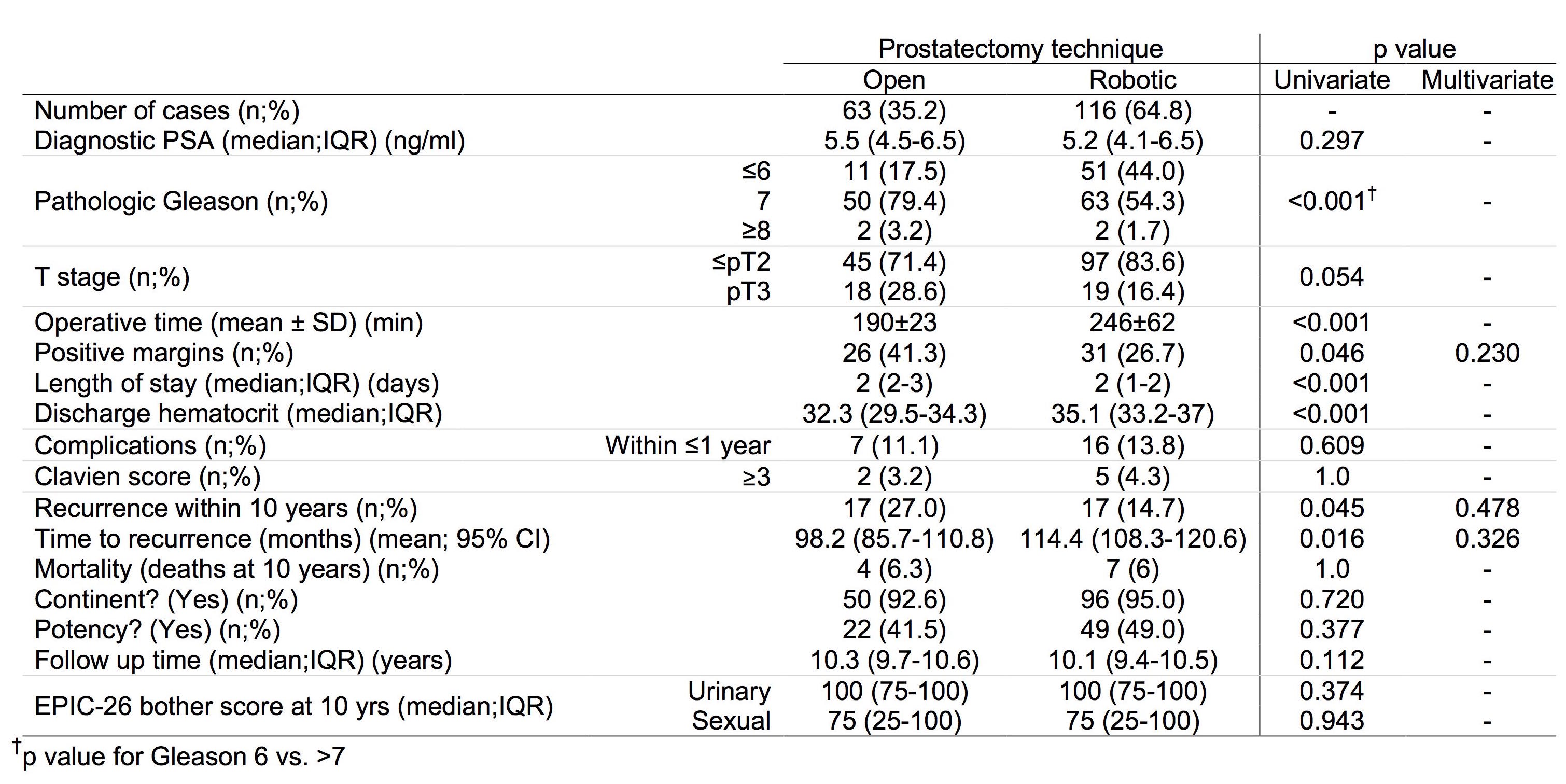|
Back to 2015 Joint Annual Meeting
A Prospective, Non-Randomized Comparison of Open versus Robotic Radical Prostatectomy With 10 Year Follow-Up
Max Jackson1, Nick Bellas1, Peter Haddock1, Timothy Siegrist2, Ilene Staff1, Vincent Laudone3, Joseph R Wagner1
1Hartford Hospital, Hartford, CT;2Middlesex Hospital, Middletown, CT;3Memorial Sloan Kettering Cancer Center, New York, NY
Introduction: The advantages and disadvantages of open radical prostatectomy (ORP) or robotic-assisted laparoscopic radical prostatectomy (RALP) continue to be debated. Given the relative novelty of RALP, long term comparison studies are lacking. In 2004, we conducted a prospective, non-randomized study of RALP v. ORP. We now present 10 year follow-up data assessing perioperative outcomes, long term urinary and sexual function, biochemical recurrence, and mortality between patients undergoing ORP or RALP.
Materials & Methods: ORP and RALP procedures were performed by a fellowship trained, different, single surgeon. Quality of life data were obtained with self-administered EPIC-26 questionnaires. Preoperative/operative/postoperative data, pathology, biochemical recurrence, mortality, and quality of life outcomes over a 10-year period were obtained and compared between ORP and RALP patients.
Results: Median follow up was 10.2 years. RALP and ORP had significantly different risk factors. RALP had longer operative times, shorter hospital stays, and higher discharge hematocrits. Accounting for PSA, Gleason score, and stage with multivariate analysis, there were no differences in margins, incidence or time to biochemical recurrence. In the RALP group, 96% of men were continent and 49% were potent v. 92.6% and 41.5% in the ORP group (p=0.72 and 0.377). Urinary and sexual bother were not significantly different among RALP and ORP (p=0.374 and 0.943).
Conclusions: RALP offers long term oncologic and quality of life outcomes equivalent to those of ORP.

Back to 2015 Joint Annual Meeting
|

